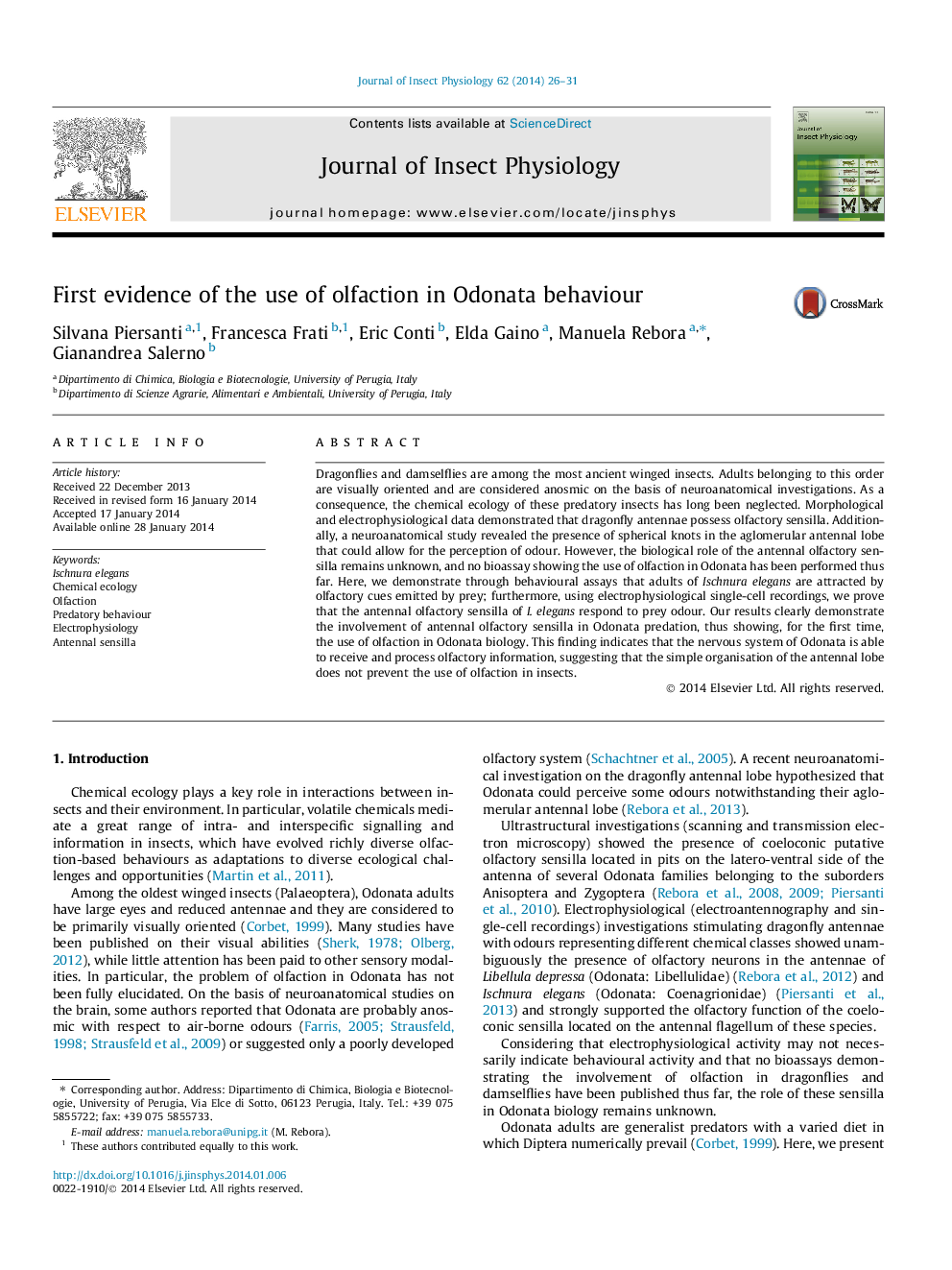| کد مقاله | کد نشریه | سال انتشار | مقاله انگلیسی | نسخه تمام متن |
|---|---|---|---|---|
| 5921692 | 1571008 | 2014 | 6 صفحه PDF | دانلود رایگان |

- We tested the attractiveness of prey odour in Ischnura elegans by behavioural assays.
- We recorded responses to prey odour from single olfactory neurons in I. elegans.
- The adults of I. elegans were attracted by olfactory cues emitted by prey.
- Antennal olfactory sensilla of I. elegans showed excitatory responses to prey odour.
- Antennal olfactory sensilla are involved in Odonata predation.
Dragonflies and damselflies are among the most ancient winged insects. Adults belonging to this order are visually oriented and are considered anosmic on the basis of neuroanatomical investigations. As a consequence, the chemical ecology of these predatory insects has long been neglected. Morphological and electrophysiological data demonstrated that dragonfly antennae possess olfactory sensilla. Additionally, a neuroanatomical study revealed the presence of spherical knots in the aglomerular antennal lobe that could allow for the perception of odour. However, the biological role of the antennal olfactory sensilla remains unknown, and no bioassay showing the use of olfaction in Odonata has been performed thus far. Here, we demonstrate through behavioural assays that adults of Ischnura elegans are attracted by olfactory cues emitted by prey; furthermore, using electrophysiological single-cell recordings, we prove that the antennal olfactory sensilla of I. elegans respond to prey odour. Our results clearly demonstrate the involvement of antennal olfactory sensilla in Odonata predation, thus showing, for the first time, the use of olfaction in Odonata biology. This finding indicates that the nervous system of Odonata is able to receive and process olfactory information, suggesting that the simple organisation of the antennal lobe does not prevent the use of olfaction in insects.
Journal: Journal of Insect Physiology - Volume 62, March 2014, Pages 26-31